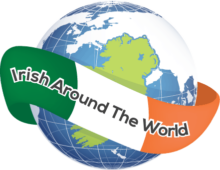Ah, St. Patrick’s Day, that glorious time of the year when rivers run green, pints flow freely, and you discover how many shades of green you can wear before you look like a walking, talking shamrock. But have you ever paused, pint in hand, and wondered, “What’s the craic with the origin of St. Patrick’s Day?” Well, my friend, you’re in for a treat—a rich and amusing story that’ll make the leprechauns dance with joy.
Who Was St. Patrick, and Why Do We Celebrate Him So Much?
First, let’s address the elephant in the room: St. Patrick wasn’t Irish. Shocking, I know. Born in Britain, he was kidnapped by pirates (yes, pirates!) at the age of 16 and sold into slavery in Ireland. Talk about a rough start to your teenage years. But, like any good story, our hero turns his misfortune into triumph. He escapes, becomes a priest, and then heads back to Ireland to convert the pagans to Christianity.
The festivities of March 17th trace their roots back to 1631, initiated not by grand parades or the clinking of pints but through the Church’s establishment of a Feast Day in honour of St. Patrick, Ireland’s revered Patron Saint, who passed into legend in the fifth century. That’s right—some 12 centuries elapsed before the holiday as we know it today first made its mark. This day is drenched in historical significance, celebrating a figure who, though not originally from Ireland, is as quintessentially Irish as the iconic shamrock.
Key Points on the Patron Saint Himself:
- Not Irish: Born in Britain, which means he probably couldn’t even handle his Guinness at first 😇
- Kidnapped by Pirates: Every cool origin story has pirates, right?
- Converted Pagans: He used the shamrock to explain the Holy Trinity, making it the go-to accessory for March 17th.
The Origin of St. Patrick’s Day: From From Sacred to Spectacular

Originally, St. Patrick’s Day was a quiet, religious affair in Ireland—think more “church” and less “chug.” However, as the Irish diaspora spread across the globe, particularly to the United States, the day transformed into the grand spectacle of parades, green rivers, and revelry we know and love today.
How Did We Get Here?
- 1737: The inaugural St. Patrick’s Day parade marches not on the soil of Ireland but through the streets of Boston, USA, setting the stage for the worldwide phenomenon to come.
- A Sea of Green: The colour green, symbolizing Ireland, spring, and the shamrock, becomes the hallmark of the day, decking out everything from city landmarks to the frothy top of a beer.
- Worldwide Revelry: Today, St. Patrick’s Day is embraced far and wide, from the shadow of Mount Fuji in Japan to the heart of Red Square in Russia, proving the universal appeal of embracing Irish culture and the fine art of celebration.
But Why All the Shenanigans?
Ah, the million-dollar question: Why has St. Patrick’s Day become such a global bash? Well, it’s not just about honouring St. Patrick anymore; it’s about celebrating Irish culture, heritage, and the art of having a good time. Plus, in the bleakness of March, who doesn’t need a bit of green and merriment to brighten things up?
What to Expect on St. Patrick’s Day:
- Parades and Performances: Everyone loves a parade, especially one where you can wear funny hats.
- Traditional Irish Music and Dance: It’s like a workout but more fun and with better music.
- The Food and Drink: Corned beef, cabbage, and enough beer to make you believe you can dance an Irish jig.
10 St. Patrick’s Day Fun Facts to Impress Your Mates
To ensure you’re the life of the St. Patrick’s Day party, arm yourself with these fun facts:
- St. Patrick’s Color Was Blue: That’s right, the original colour associated with St. Patrick’s was blue. Green only took over because of its association with the shamrock and Irish nationalism.
- There Are More Irish in the USA Than in Ireland: With over 30 million Irish-Americans, the U.S. boasts a larger Irish population than Ireland itself. Talk about exporting culture!
- The Shortest St. Patrick’s Day Parade: In the Irish village of Dripsey, the parade used to run between the village’s two pubs—100 yards in total. Now, that’s my kind of parade!
- St. Patrick Wasn’t Named Patrick: His birth name was actually Maewyn Succat. He only took the name Patrick upon becoming a priest. So, when you’re cheering to St. Paddy, you’re actually toasting to Maewyn!
- No Snakes in Ireland: One of the most famous legends about St. Patrick is that he banished all snakes from Ireland. However, in reality, Ireland never had snakes to begin with due to its isolation from mainland Europe. The “snakes” St. Patrick banished are thought to symbolize pagan practices.
- The World’s Largest Shamrock: In the small town of O’Neill, Nebraska, the self-proclaimed “Irish Capital of Nebraska,” residents paint a massive shamrock on the road every St. Patrick’s Day. It’s a sight to behold and a testament to the lengths people will go to celebrate.
- Guinness Sales Skyrocket: On St. Patrick’s Day, Guinness beer sales more than doubled worldwide, with approximately 13 million pints being poured. That’s enough to fill two and a half Olympic swimming pools!
- The Irish Language: St. Patrick’s Day is a great time to brush up on your Irish. Here’s a phrase to get you started: “Lá fhéile Pádraig sona dhuit!” (Happy St. Patrick’s Day to you!). Impress your friends with your linguistic prowess.
-

In 2011, St. Patrick’s Day The First St. Patrick’s Day Celebration in Space went interstellar when astronaut Catherine Coleman played a hundred-year-old flute and a tin whistle belonging to The Chieftains’ Paddy Moloney aboard the International Space Station. It was a cosmic nod to the global reach and universal joy of St. Patrick’s Day. Imagine floating in zero gravity, decked out in green, with “Danny Boy” echoing in the vastness of space. Now, that’s out of this world!
- The Chicago River Turns Green:
 Since 1962, Chicago has celebrated St. Patrick’s Day by dyeing its river an emerald green. The dye used is eco-friendly and originally intended to detect illegal sewage discharges. However, it has since become an annual tradition that draws crowds from all over, marvelling at the river as it transforms into a flowing ribbon of green. This spectacle highlights the lengths to which cities will go to mark St. Patrick’s Day, turning environmental vigilance into a celebration of Irish heritage.
Since 1962, Chicago has celebrated St. Patrick’s Day by dyeing its river an emerald green. The dye used is eco-friendly and originally intended to detect illegal sewage discharges. However, it has since become an annual tradition that draws crowds from all over, marvelling at the river as it transforms into a flowing ribbon of green. This spectacle highlights the lengths to which cities will go to mark St. Patrick’s Day, turning environmental vigilance into a celebration of Irish heritage.
So, What Have We Learned?
The “origin of St. Patrick’s Day” is a tale of transformation from a sombre religious day to an international festival celebrating all things Irish. It’s a day when we’re all a little Irish, whether we’re toasting with green beer, attempting to dance a jig, or simply enjoying the camaraderie and craic.
As you don your green attire and raise your glass this St. Patrick’s Day, remember you’re partaking in a tradition that’s as rich in history as it is in Guinness. So, here’s to St. Patrick, the man who started it all, and to you, dear reader, for keeping the spirit alive.
May your St. Patrick’s Day be filled with laughter, joy, and perhaps a touch of Irish luck. Sláinte!
